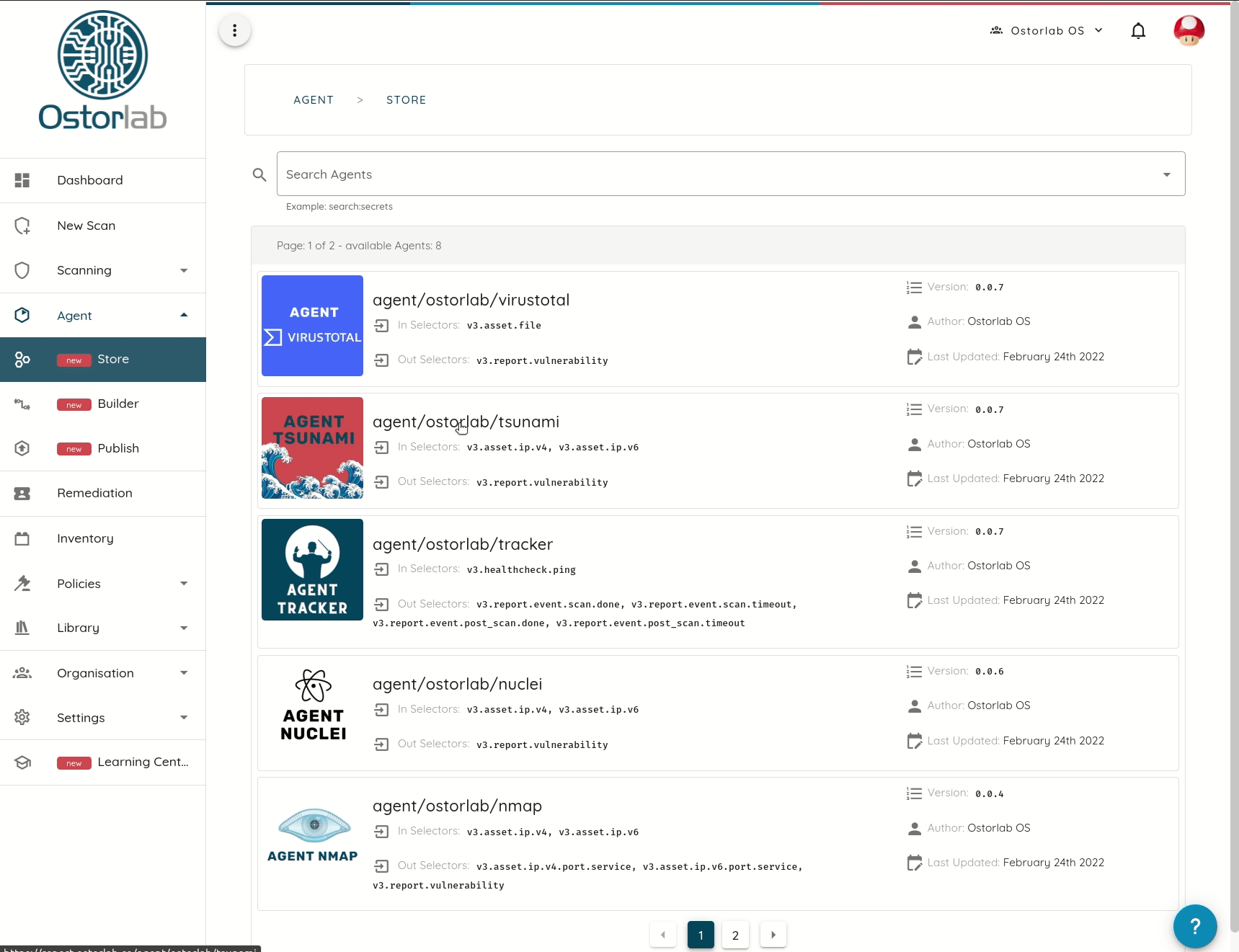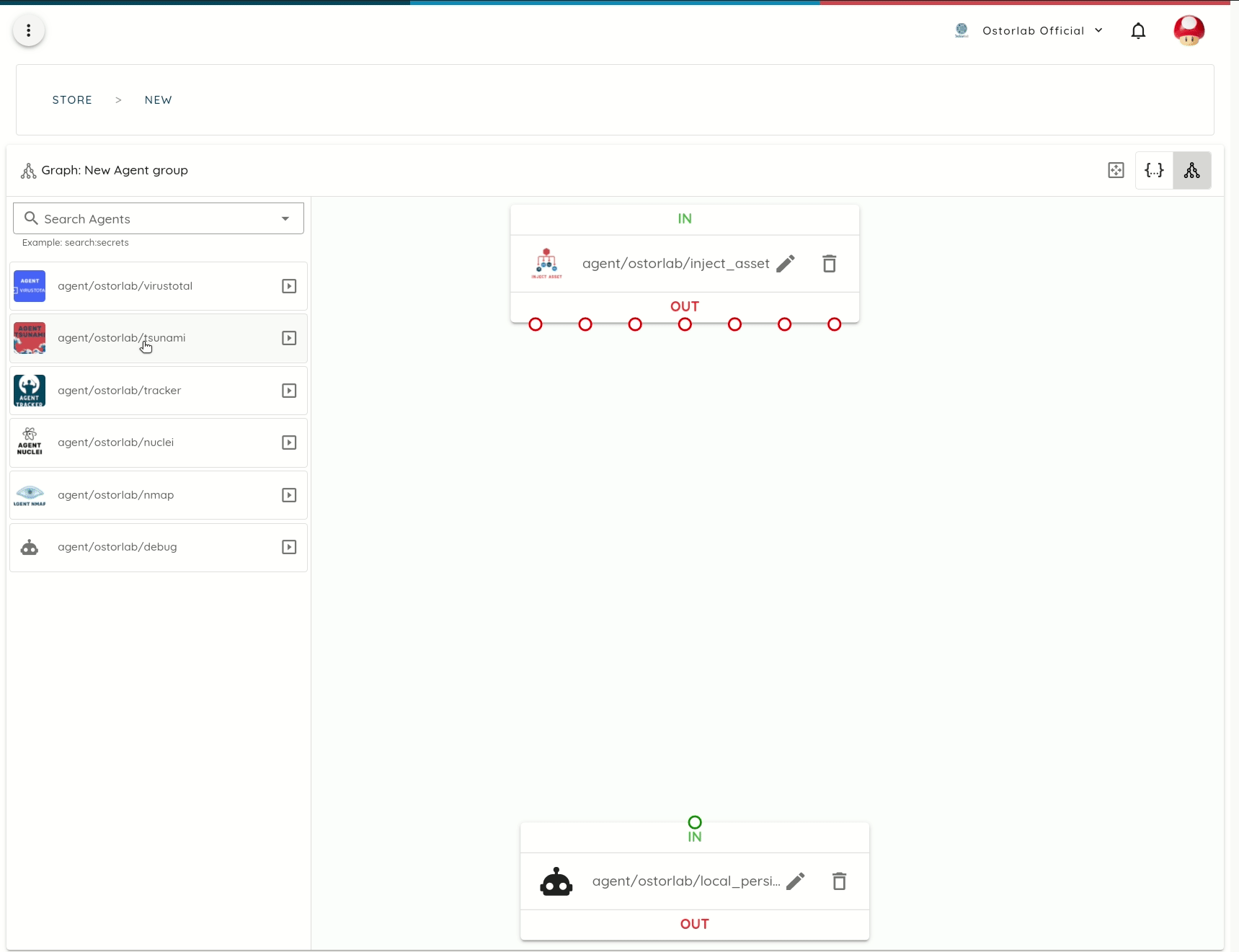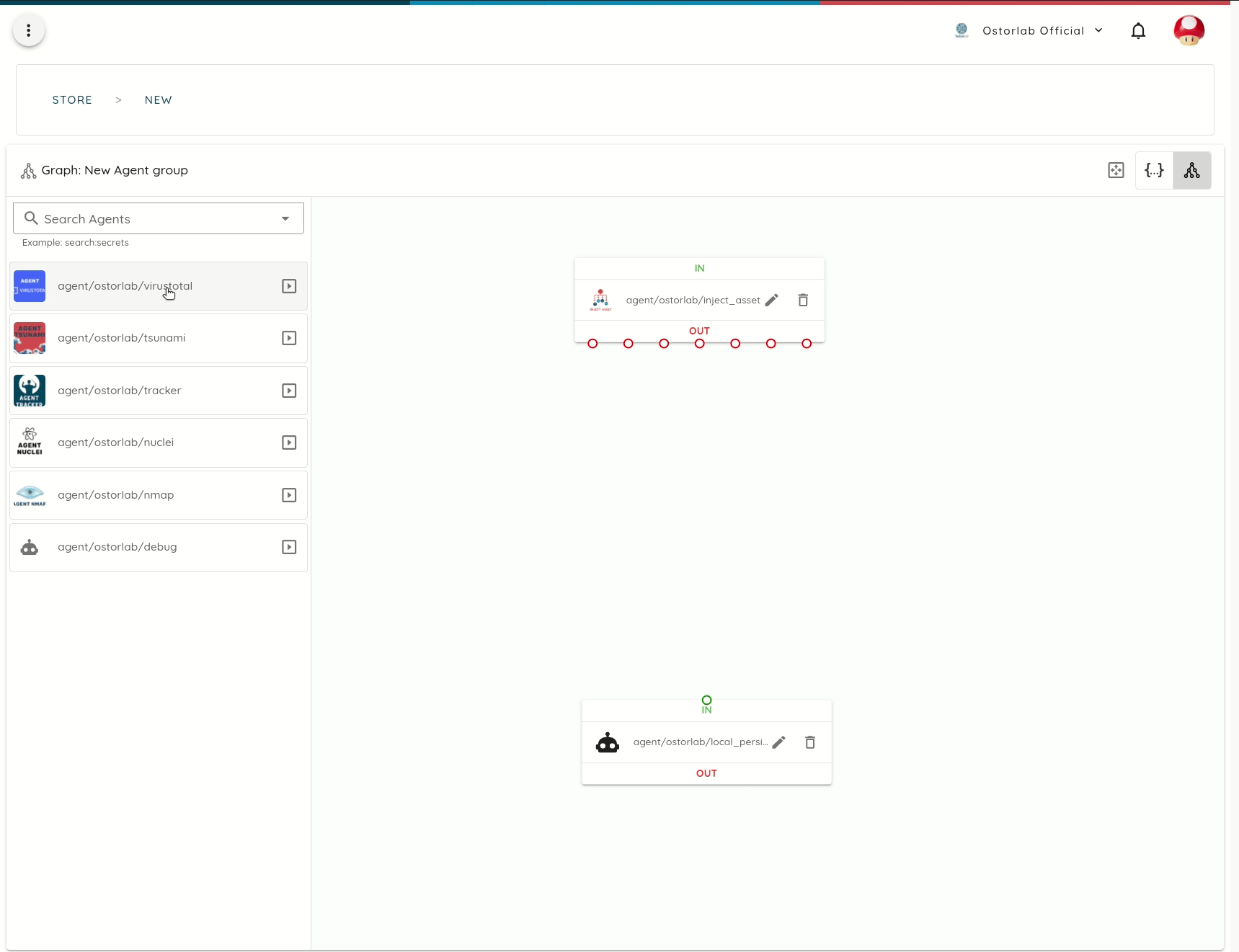Getting started
Get started using the OXO Command-Line Interface.
OXO is a security scanning framework built for modularity, scalability and simplicity.
OXO Engine combines specialized tools to work cohesively to find vulnerabilities and perform actions like recon, enumeration, fingerprinting, and more.

Requirements
Docker is required to run scans locally. To install docker, please follow these instructions.
Installing
OXO ships as a Python package on pypi. To install it, simply run the following command if you have pip already installed.
pip install -U ostorlab
Getting Started
OXO ships with a store that boasts dozens of agents, from network scanning agents like Nmap, Openvas, Nuclei or Tsunami, web scanner like Zap, web fingerprinting tools like Whatweb and Wappalyzer, DNS brute forcing like Subfinder and Dnsx, malware file scanning like Virustotal and much more.
To run any of these tools combined, simply run the following command:
oxo scan run --install --agent agent/ostorlab/nmap --agent agent/ostorlab/openvas --agent agent/ostorlab/tsunami --agent agent/ostorlab/nuclei ip 8.8.8.8
This command will download and install the following scanning agents:
agent/ostorlab/nmapagent/ostorlab/tsunamiagent/ostorlab/nucleiagent/ostorlab/openvas
And will scan the target IP address 8.8.8.8.
Agents are shipped as standard docker images.
To check the scan status, run:
oxo scan list
Once the scan has completed, to access the scan results, run:
oxo vulnz list --scan-id <scan-id>
oxo vulnz describe --vuln-id <vuln-id>
Examples
Agents accept argument to tweak their behavior, like setting the default ports for nmap or passing the API key to Virustotal. Agents composition can also be saved to a YAML file for latter use. See below some examples.
- Run a network scan:
# file: agent_group.yaml
kind: AgentGroup
description: Grouping of 4 agents.
agents:
- key: agent/ostorlab/nmap
args:
- name: ports
type: string
description: List of ports to scan.
value: '22,443,80'
- key: agent/ostorlab/tsunami
args: [ ]
- key: agent/ostorlab/openvas
args: [ ]
- key: agent/ostorlab/nuclei
args:
- name: template_urls
type: array
description: List of template urls to run. These will be fetched by the agent
and passed to Nuclei.
value: ""
- name: use_default_templates
type: boolean
description: use nuclei's default templates to scan.
value: true
oxo scan run --install -g agent_group.yaml ip 8.8.8.8 8.8.4.4
- Run a web scan:
# file: agent_group.yaml
kind: AgentGroup
description: Grouping of 2 agents.
agents:
- key: agent/ostorlab/zap
args: [ ]
- key: agent/ostorlab/whatweb
args: [ ]
oxo scan run --install -g agent_group.yaml domain-name example.com
- List all subdomains, resolve their IP addresses and run a network scan:
# file: agent_group.yaml
kind: AgentGroup
description: Grouping of 3 agents.
agents:
- key: agent/ostorlab/nmap
args: [ ]
port_mapping: [ ]
- key: agent/ostorlab/subfinder
args: [ ]
- key: agent/ostorlab/dnsx
args: [ ]
oxo scan run --install -g agent_group.yaml domain-name example.com
- Brute force all TLDs of a subdomain and resolve their IP addresses:
# file: agent_group.yaml
kind: AgentGroup
description: Grouping of 4 agents.
agents:
- key: agent/ostorlab/nmap
args: [ ]
- key: agent/ostorlab/all_tlds
args: [ ]
- key: agent/ostorlab/subfinder
args: [ ]
- key: agent/ostorlab/dnsx
args: [ ]
oxo scan run --install -g agent_group.yaml domain-name example.com
- Scanning a list of assets is supported using a Yaml asset definition file:
Inject domain name assets
example.comandexample_2.com.
oxo scan run --install -g agent_group.yaml -a assets_group.yaml
# file: asset_group.yaml
description: Target group definition
kind: targetGroup
name: master_scan
assets:
domain:
- name: "example.com"
- name: "example_2.com"
Inject IOS store assets with the bundle_ids com.example.app and com.example_2.app.
oxo scan run --install -g agent_group.yaml -a assets_group.yaml
# file: asset_group.yaml
description: Target group definition
kind: targetGroup
name: master_scan
assets:
iosStore:
- bundle_id: "com.example.app"
- bundle_id: "com.example_2.app"
Here is a more encompassing example:
oxo scan run --install -g agent_group.yaml -a assets_group.yaml
# file: asset_group.yaml
description: Target group definition for the NSA
kind: targetGroup
name: master_scan
assets:
androidStore:
- package_name: "com.example.app"
- package_name: "com.example_2.app"
androidApkFile:
- path: /home/organisation/assets/application.apk
- path: /home/organisation/assets/application.apk
- url: https://exanple.storage.com/production.apk
- url: https://exanple.storage.com/dev.apk
androidAabFile:
- path: /home/organisation/assets/application.aab
- path: /home/organisation/assets/application.aab
- url: https://exanple.storage.com/production.aab
- url: https://exanple.storage.com/dev.aab
iosStore:
- bundle_id: "com.example.app"
- bundle_id: "com.example_2.app"
iosFile:
- path: /home/organisation/assets/application.ipa
- path: /home/organisation/assets/application.ipa
- url: https://exanple.storage.com/production.ipa
- url: https://exanple.storage.com/dev.ipa
link:
- url: "https://www.nasa.gov/humans-in-space/artemis/"
method: "GET"
- url: "https://www.nasa.gov/specials/artemis/"
method: "POST"
domain:
- name: "example.co"
- name: "example_2.dev"
ip:
- host: "10.21.11.11"
mask: 30
- host: 0.1.2.1
The Pitch
Testing for even the most simple vulnerabilities often requires chaining multiple tools. Take for instance scanning for a Log4J bug, this requires:
- Crawling
- Path brute forcing
- Request Injection Point fuzzing
- Callback interception
- Tools will often re-invent the wheel by poorly re-implementing all of these and then add their detection. These often results in poor detectors as most of these are complex tasks that requires specialized tools.
OXO offers the ease of chaining the specialized tools to focus on perform the required task, offering increased detection, faster delivery.
To do that, OXO provides on the following:
- A simple, yet powerful SDK to make simple cases effortless while supporting the complex one, like distributed locking, QPS limiting, multiple instance parallelization...
- A battle-tested framework that has been powering Ostorlab Platform for years and used to perform complex dynamic analysis setup and demanding static analysis workloads running on multiple machines.
- Performant and scalable design, thanks to the use of message queue with dynamic routing, binary and compact message serialisation with protobuf, universal file format using docker image and resilient deployment thanks to docker swarm.
- A store of agents that makes it easy to use and discover tools to add your toolset.
- An automated builder to take the hassle away of building and publishing.
- A GUI to prepare and write down your tool collection setup.
- Focus on documentation, multiple tutorials and upcoming videos and conference presentations.
- A ready to use one-click template repo to get started.
Assets
OXO supports scanning of multiple asset types, below is the list of currently supported:
| Asset | Description |
|---|---|
| agent | Run scan for agent. This is used for agents scanning themselves (meta-scanning :). |
| ip | Run scan for IP address or an IP range . |
| link | Run scan for web link accepting a URL, method, headers and request body. |
| file | Run scan for a generic file. |
| android-aab | Run scan for an Android .AAB package file. |
| android-apk | Run scan for an Android .APK package file. |
| ios-ipa | Run scan for iOS .IPA file. |
| domain-name | Run scan for Domain Name asset with specifying protocol or port. |
The Store
OXO lists all agents on a public store where you can search and also publish your own agents.

In addition to the store, a graphical agent group builder is also available to compose multiple agents and see how they
would interact with each other.

The builder also helps with generating the agent group YAML file to set special arguments that can be passed to agents
to control their behavior.

Publish your first Agent
To write your first agent, you can check out a full tutorial.